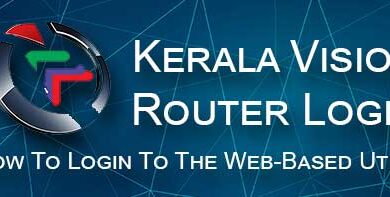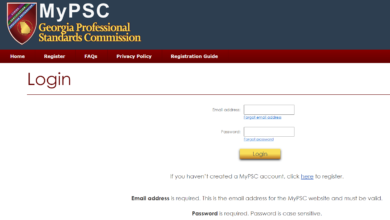Cloud Security Fundamentals: Ensuring Safety in the Digital Age

Introduction
Enterprises large and small are shifting everything-from payroll applications to machine-learning models-out of the data-center cage and into public and hybrid clouds. Analysts at Gartner estimate that more than 70 percent of corporate workloads will run on infrastructure managed by Amazon, Microsoft, Google, or another hyperscale provider by 2025. At the same time, headlines about exposed S3 buckets, hijacked developer tokens, and multimillion-dollar ransomware pay-outs remind boards that “cloud” is not a synonym for “secure.”
The core problem is misunderstanding. Many IT teams still treat cloud platforms like remote colocation facilities, while security teams assume the provider blocks anything that looks malicious. In reality, misaligned expectations create gaps that attackers exploit. This guide walks through the foundational principles that close those gaps and harden workloads-without sacrificing the agility that made the cloud attractive in the first place.
Grasping the Shared-Responsibility Model
Every major cloud vendor publishes a diagram that divides security duties. At the Infrastructure-as-a-Service (IaaS) layer, you-the customer-own the operating system, data, identities, and network configuration. The provider pledges to secure the hypervisor, the physical hosts, and the power and cooling inside each region. Software-as-a-Service (SaaS) shifts more work to the vendor, but you still control who can log in and what those users can do. Paas offerings land somewhere in the middle.
Understanding these lines is more than academic. When the legal team asks who is liable for a breach, the diagram becomes Exhibit A. It also underpins budgeting conversations: if multi-factor authentication (MFA) is a customer duty, then funding a robust identity platform is not optional. A clear delineation of roles also yields key benefits of strong cloud security protocols, such as faster audits and fewer policy disputes with regulators, because everyone agrees on who does what from the outset.
Identity and Access Management (IAM) Essentials
The single biggest lever you can pull to protect cloud assets is strong identity. Attack-path studies by Verizon and Mandiant show that more than two-thirds of cloud breaches begin with a stolen or guessed credential. Phishing-resistant MFA-using FIDO2 keys, passkeys, or number-matching rather than SMS codes-renders most credential-stuffing campaigns useless.
Least-privilege design is the next priority. Instead of giving every engineer “Admin” rights in AWS or Azure, grant narrowly scoped roles-such as “S3-read-only-billing” or “Dev-Lambda-deploy”-and expire them automatically. Rotate keys and service tokens on a fixed schedule, or better, replace static credentials with short-lived workload identities issued by your cloud’s metadata service. The National Institute of Standards and Technology (NIST) offers a helpful baseline in Special Publication 800-63 for organizations that need a standards-backed reference.
Network Security Baselines
A flat, any-to-any network undermines every other control. Segmentation begins by placing production, development, and testing workloads in separate virtual networks or VPCs. Private service endpoints keep SaaS and PaaS traffic off the public internet, slashing exposure to port scans and denial-of-service bursts. Granular security groups-think of them as cloud-native firewalls-restrict talking rights to only the protocols each service genuinely needs. For example, an API running on Kubernetes might allow inbound 443/TCP from the load balancer but block all egress except to a managed PostgreSQL endpoint.
Leaning on micro-segmentation shrinks the blast radius: if an attacker compromises a web server, lateral movement to the database tier becomes exceedingly difficult. Microsoft’s Zero Trust white paper provides additional design patterns for segmentation in Azure and hybrid environments.
Data Protection Fundamentals
Data is the prize. Encrypting traffic in transit with TLS 1.2 or higher prevents eavesdropping, while encryption at rest ensures an attacker cannot read snapshots even if they pull a disk from a rack. Cloud-provider key-management services (KMS) suffice for most workloads, but organizations handling classified or payment data may prefer an on-premises hardware security module (HSM) that extends keys into the cloud through bring-your-own-key or bring-your-own-encryption integrations.
Lifecycle management closes the loop. Classify assets-public, internal, confidential, or regulated-then apply retention tags, auto-archive rules, and purge dates. Amazon Macie and Google Cloud DLP can scan buckets and flag sensitive data residing in the wrong region or without proper encryption. The European Union’s GDPR fines underscore why classification matters: storing EU citizen data in a U.S. region without consent can carry multi-million-euro penalties.
Continuous Monitoring and Posture Management
Logs are table stakes. Enable AWS CloudTrail, Azure Activity Logs, or Google Cloud Audit Logs across every account and land them in a dedicated log bucket that no human can delete. Centralize telemetry in a security information and event-management (SIEM) or an extended detection and response (XDR) platform so analysts can correlate anomalies-an API key created at midnight from an IP in another country followed by mass S3 reads is worth a pager alert.
Cloud security posture-management (CSPM) and cloud-native application-protection platforms (CNAPP) run continuous scans for misconfigurations such as publicly exposed storage or open security groups. Industry studies show these tools catch 80 percent of preventable cloud breaches before attackers do. Google’s Chronicle Security Operations and Palo Alto Networks’ Prisma Cloud both provide reference architectures for unified log ingestion.
Secure Development and CI/CD Pipelines
Developers move faster than any centralized security team, so shift security left. Infrastructure-as-Code (IaC) templates-Terraform, CloudFormation, Bicep-should pass through static analysis tools that detect risky resources (e.g., an S3 bucket without encryption) before merge. Container images require vulnerability scanning in the build phase and signed attestations to prove their provenance.
Policy-as-code guardrails in Rego or Open Policy Agent can reject a pull request automatically if it violates a compliance rule, eliminating fiery post-deployment audits. This practice aligns with the supply-chain security framework promoted by the CNCF and OpenSSF communities.
Incident-Response Readiness in the Cloud
Detection starts with anomaly rules-sudden creation of hundreds of IAM users, login attempts from an unexpected region, or a spike in failed API calls. When alerts fire, automation should tag and isolate the suspect instance, snapshot disks for forensics, and cut off internet egress in seconds.
Eradication focuses on the root cause: patch the vulnerable container image, revoke compromised access keys, and update IaC modules so the flaw never redeploys. Recovery leans on immutable cross-region snapshots-verified during routine game-days-to avoid paying ransom for data you already own.
Compliance and Governance Alignment
Auditors now expect real-time evidence. Map your technical controls to frameworks such as NIST CSF, ISO 27001, PCI DSS, and GDPR, then automate evidence collection with API queries and dashboard exports. Tools like AWS Audit Manager or Azure Policy export compliance snapshots on demand, slashing the time staff spend assembling screenshots for each quarterly review. Data-sovereignty laws add another wrinkle: make sure backup copies, log archives, and test datasets stay within approved regions, or risk fines and contractual penalties.
Conclusion
Cloud breaches seldom hinge on a single spectacular exploit. They flourish where fundamentals lapse: a forgotten admin account without MFA, a flat network that lets attackers hop from a web server to a billing database, or a backup job that writes to the same bucket the application can delete. Embedding shared-responsibility awareness, identity rigor, segmented networks, encryption everywhere, continuous monitoring, secure pipelines, and rehearsed incident playbooks into everyday DevSecOps workflows is the surest way to realize the promise of the cloud without surrendering control.
Frequently Asked Questions
1. Do I still need a traditional firewall in the cloud?
Yes. Virtual firewalls or cloud-native security groups enforce east-west controls that the provider’s perimeter protections do not cover.
2. How often should I rotate cloud access keys?
Industry best practice is every 90 days or less. Even better, replace long-lived keys with temporary, automatically generated tokens.
3. What’s the quickest win for improving cloud security next quarter?
Mandate phishing-resistant MFA for every human and service account that touches the management console or APIs; it blocks the majority of cloud breach entry points.




